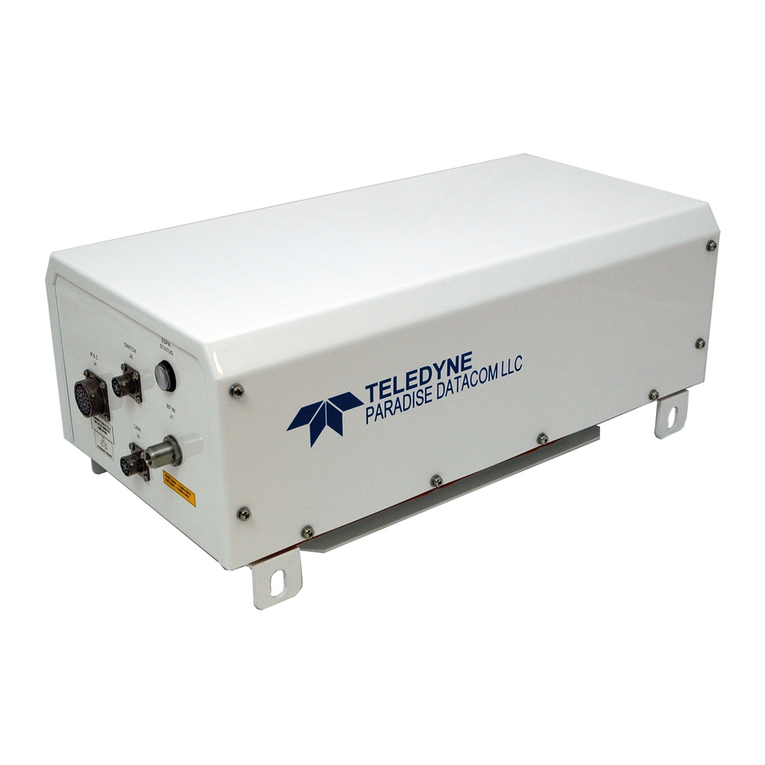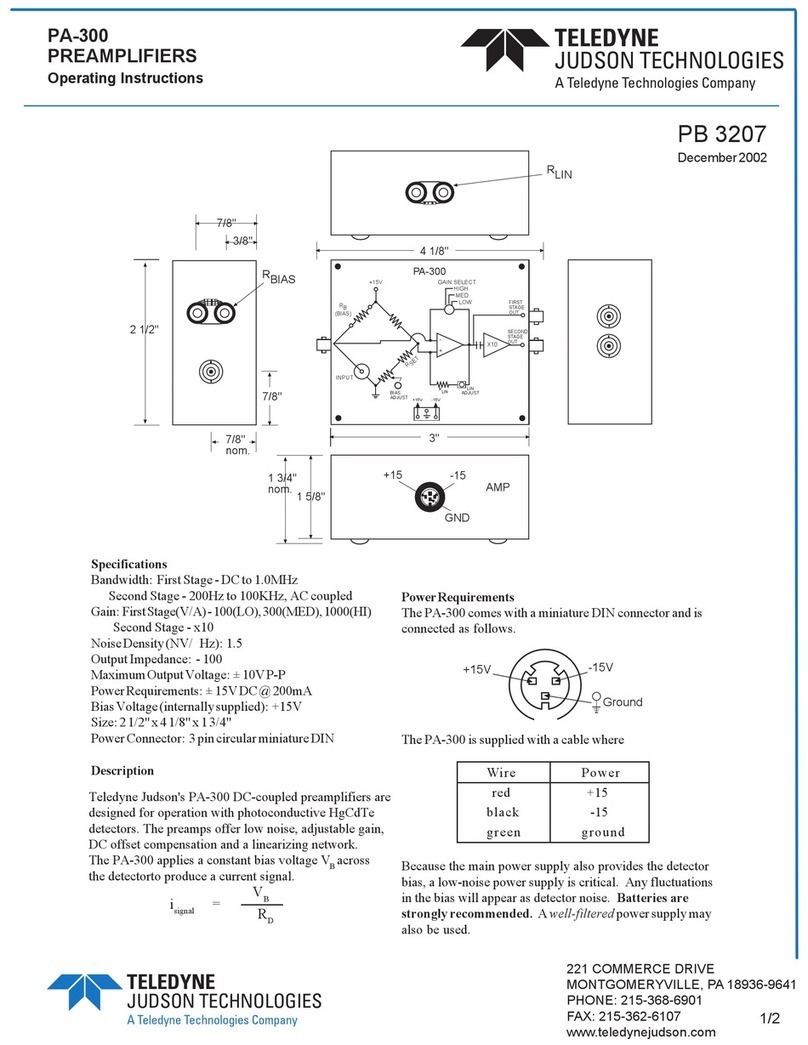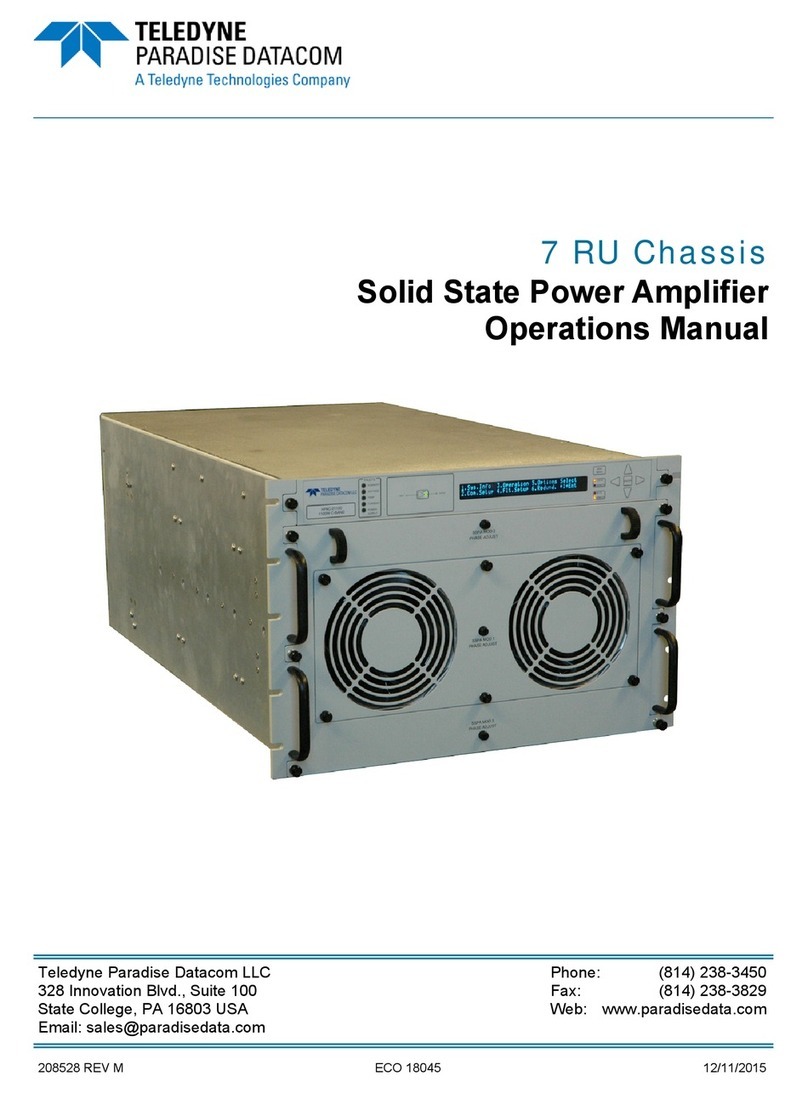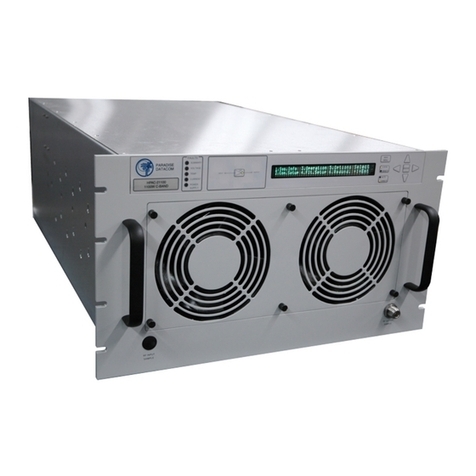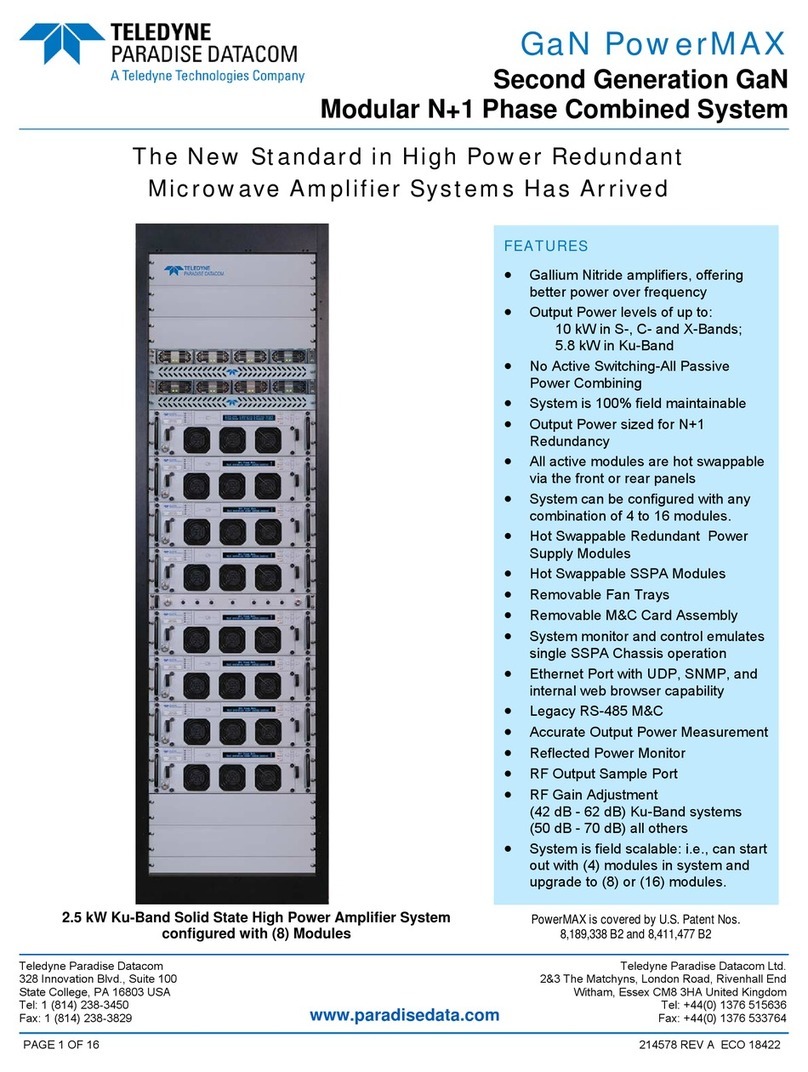
8 205356 REV T 3 RU SSPA Chassis Operations Manual
Appendix A: Ethernet Interface Quick Set-Up ...................................................................141
Appendix B: Proper 10/100 Base-T Ethernet Cable Wiring ..............................................145
Appendix C: RM SSPA Control with Paradise Datacom Universal M&C.........................149
Appendix D: Automatic Level Control................................................................................153
Appendix E: Documentation................................................................................................155
List of Figures
Figure 1-1: Degradation of Breakdown Power by VSWR .............................................17
Figure 2-1: 3RU SSPA Chassis Front Panel ................................................................19
Figure 2-2: C-Band SSPA Rear Panel..........................................................................21
Figure 2-3: 3RU SSPA Chassis with 1RU N+1 Redundant Power Supply ................... 22
Figure 2-4: Terminal Block............................................................................................23
Figure 2-5: Power Supply Alarm Cable Connection .....................................................23
Figure 2-6: Front Panel Menu Structure .......................................................................28
Figure 2-7: System Information Menu Structure ...........................................................29
Figure 2-8: Slave Unit Display ......................................................................................38
Figure 2-9: Communication Setup Sub-Menu...............................................................40
Figure 2-10: Operation Setup Sub-Menu......................................................................46
Figure 2-11: Fault Monitoring Setup Sub-Menu............................................................48
Figure 2-12: Options Sub-Menu....................................................................................52
Figure 2-13: Redundancy Sub-Menu............................................................................55
Figure 2-14: N+1 Info Menu..........................................................................................57
Figure 2-15: Front Panel Display, Master Unit (Online Indicator Illuminated)...............60
Figure 2-16: Front Panel Display, Slave Unit (Online Indicator Dark)...........................60
Figure 3-1: Front Panel Fault Display ...........................................................................65
Figure 3-2: Unscrew Thumb Screws on Fan Tray and Slide Tray from Chassis ..........68
Figure 3-3: Unplug Quick Connector ............................................................................68
Figure 3-4: Unscrew Four Thumb Screws on Rear Panel Fan Assembly ....................68
Figure 3-5: Disconnect Power Connector to Remove Fan Tray ...................................68
Figure 3-6: Example of Dust Blocking Heatsink Fins....................................................69
Figure 3-7: Heatsink Fins Cleared of Debris.................................................................70
Figure 3-8: Module Placement......................................................................................70
Figure 3-9: Remove Power Supply Module ..................................................................71
Figure 3-10: Loosen Retaining Thumb Screws.............................................................72
Figure 3-11: Remove Card to Access Programming Connectors.................................72
Figure 3-12: Web Upgrade Authentication Window......................................................74
Figure 3-13: Firmware Upload Form.............................................................................74
Figure 3-14: Proceed With Upgrade Prompt.................................................................75
Figure 3-15: Upload Process Message.........................................................................75
Figure 3-16: Upload Completed Message ....................................................................75
Figure 3-17: Windows Device Manager > Ports ...........................................................76
Figure 3-18: Command Window Showing Program Prompts .......................................76
Figure 4-1: Block Diagram, 1:1 Redundant System......................................................79
Figure 4-2: RM SSPA 1:1 Redundant Systems ............................................................80
Figure 4-3: Outline Drawing, Switch Connector Cable .................................................81
Figure 4-4: Outline Drawing, Link Port Cable ...............................................................82
Figure 4-5: Cable Connection Between SSPAs and Waveguide Switch ......................83
Figure 4-6: “Unit 1” Indicator from Front Panel .............................................................84
Figure 5-1: Block Diagram, 1:2 Redundant System......................................................87
Figure 5-2: Outline Drawing, Switch Connector Cable .................................................89




